Last time, we moved to County Kerry and visited the Dingle Peninsula. This day, we decided to explore the village we were living in. Ballyheigue1 is a holiday village and was reduced to its smaller, non-holiday size when we were there.2 In October, the place was not what you would call bustling. (From Kevin: The local cemetery was the liveliest spot in the village. [jk])
Still, there is history there and so we decided to enjoy the walking tour of the town. And, because we are who we are, we took it backwards.3 This was just as well, because the first four stops (of six) were “in the 19th century there used to be something interesting here but it’s not here anymore.” So, we had a lovely walk and saw where St. James's Church isn’t, but used to be; learned all about what the Linne Kiln was (it was used to convert limestone rocks into lime powder), but isn’t anymore; stopped by where Healy's Cross would have been if it was still where it was way back when (but it isn’t), and learned about the history of making butter where The Creamery once stood. (“Seriously, it was here! Trust us!”)
Next stop was Our Lady’s Well.4 The grotto is from the 20th Century, but the well itself was used in Celtic times. The Well water is still used for blessing and for drinking.
And, we saved the best for last. For Ballyheigue is very proud of its Castle.5
The Castle was built in the early 19th century and it was the seat of the Crosbie family, landlords of Ballyheigue until 1921. The Castle was sold in 1920 and intentionally burned down in 1921 in order to prevent it being used as a detention center for Republicans during the War of Independence.6
The next day was our anniversary7 and we ventured into the nearest actual city8 for a fancy anniversary dinner.
But, eventually, it was time to go home. And, a good thing, too.
And now, for no particular reason, a Duncan performance in three acts.9
Next time… a trip to … and from … Dublin Airport.
Recall from our Sligo arrival that Bally means “place of” in Irish. We have no idea who or what a “heigue” might be.
Ballyheigue is a village, which is not quite a town. Per our observations, to qualify as a town in Ireland, you need a church (preferably two - one Catholic and one Protestant), a grocery store, a pharmacy, a post office, a Garda (police) station, and a gas station. And at least two pubs. Ballygeigue’s post office is inside the grocery store and it does not have a gas station. It does have three pubs, though.
Kevin kept bumping into things.
It was there!
And Golf Course. Despite the wind and rain, there were golfers playing!
The Irish one. But you knew that.
23! (And counting!)
Tralee (tray-lee).
Why do people think we spoil our cat?
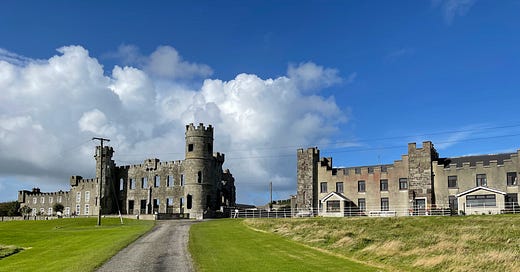






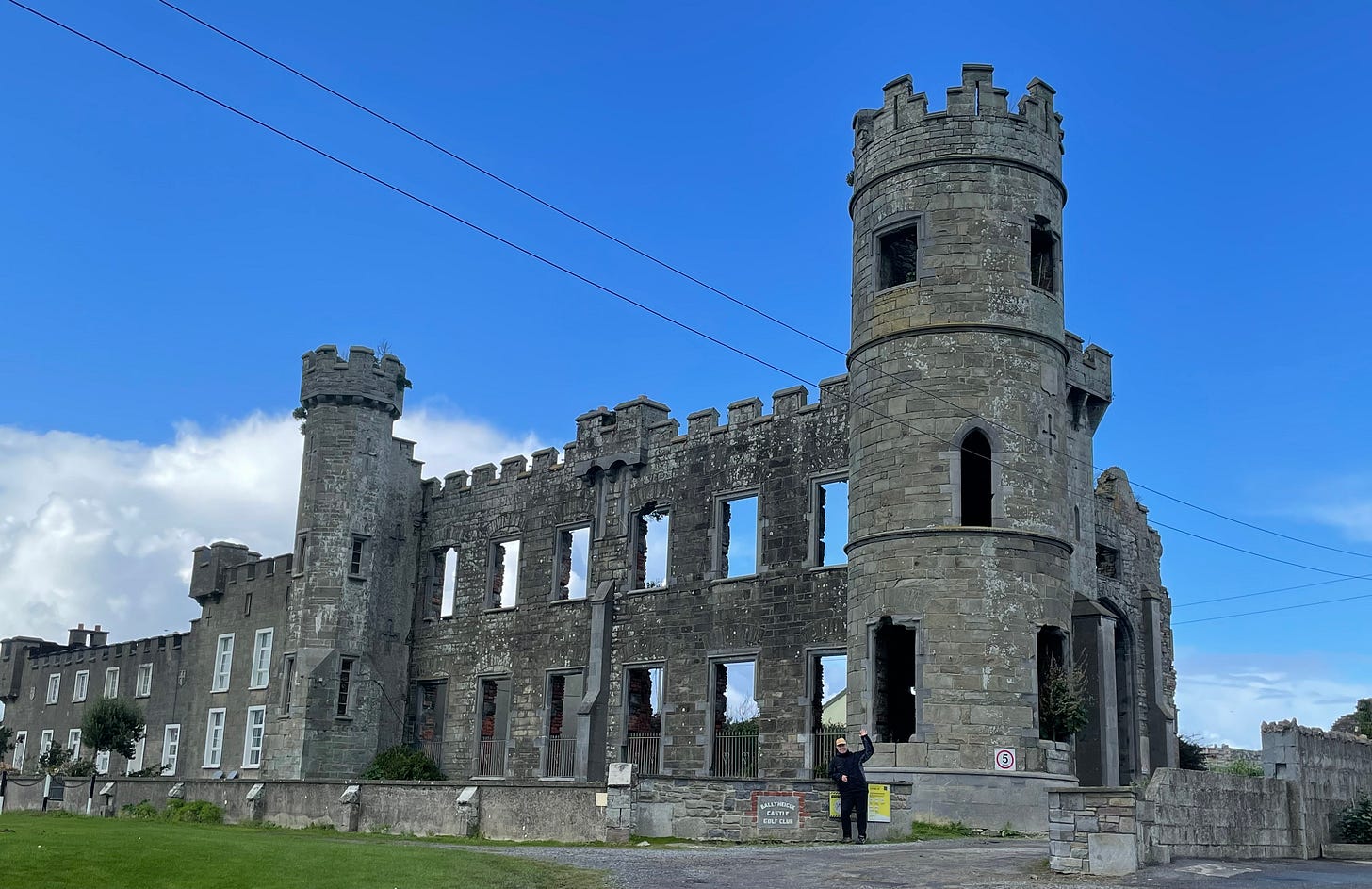
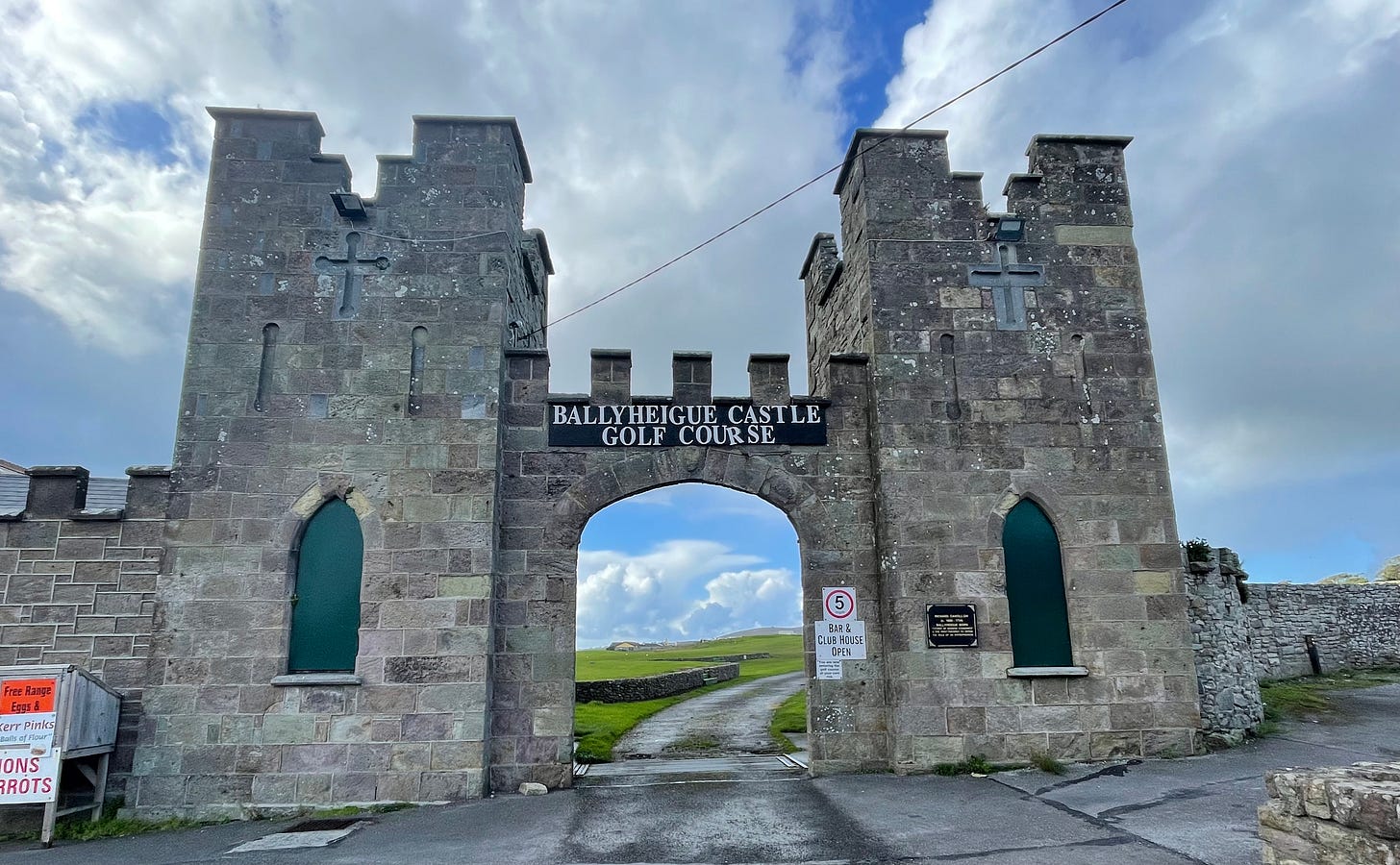


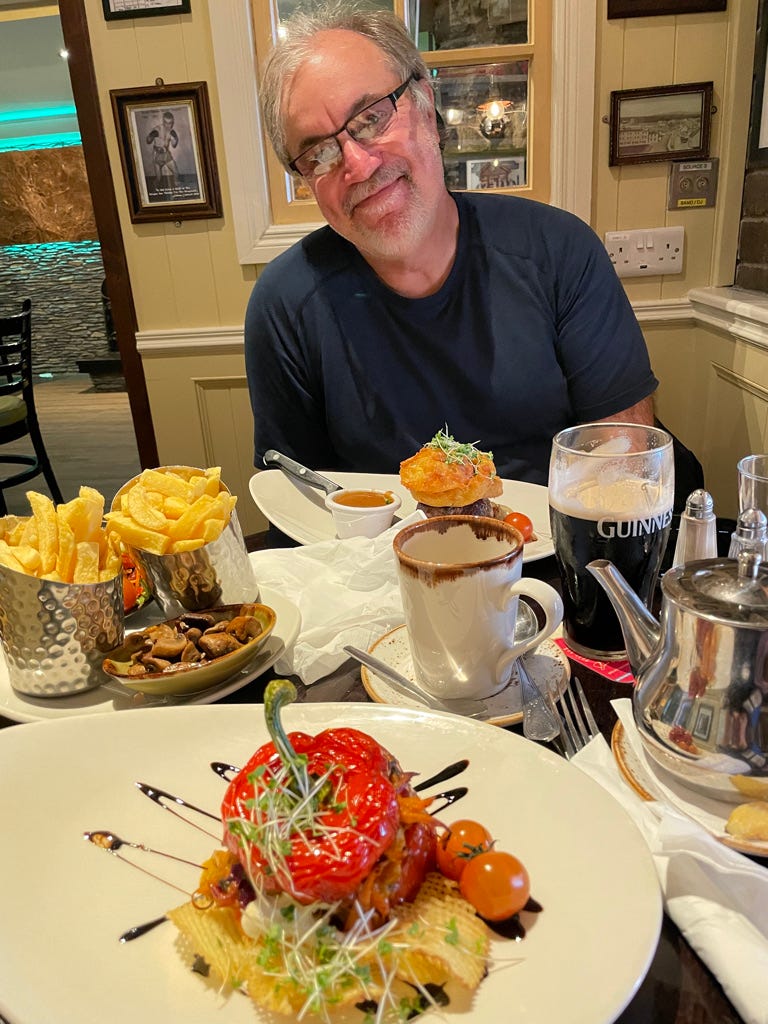
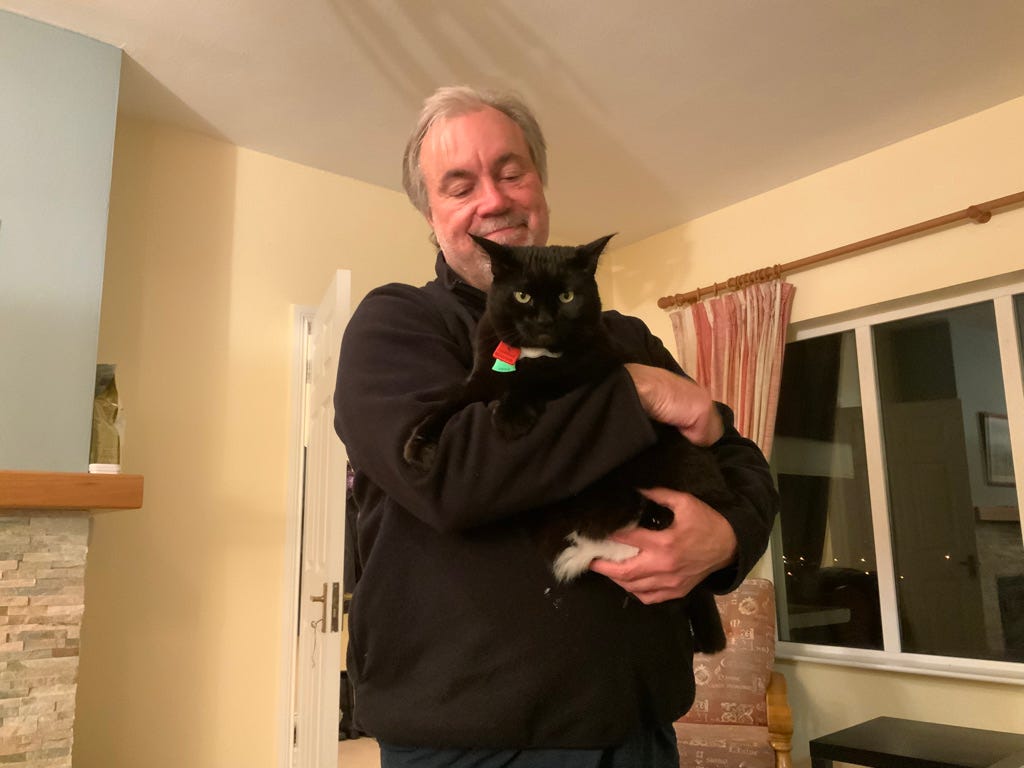

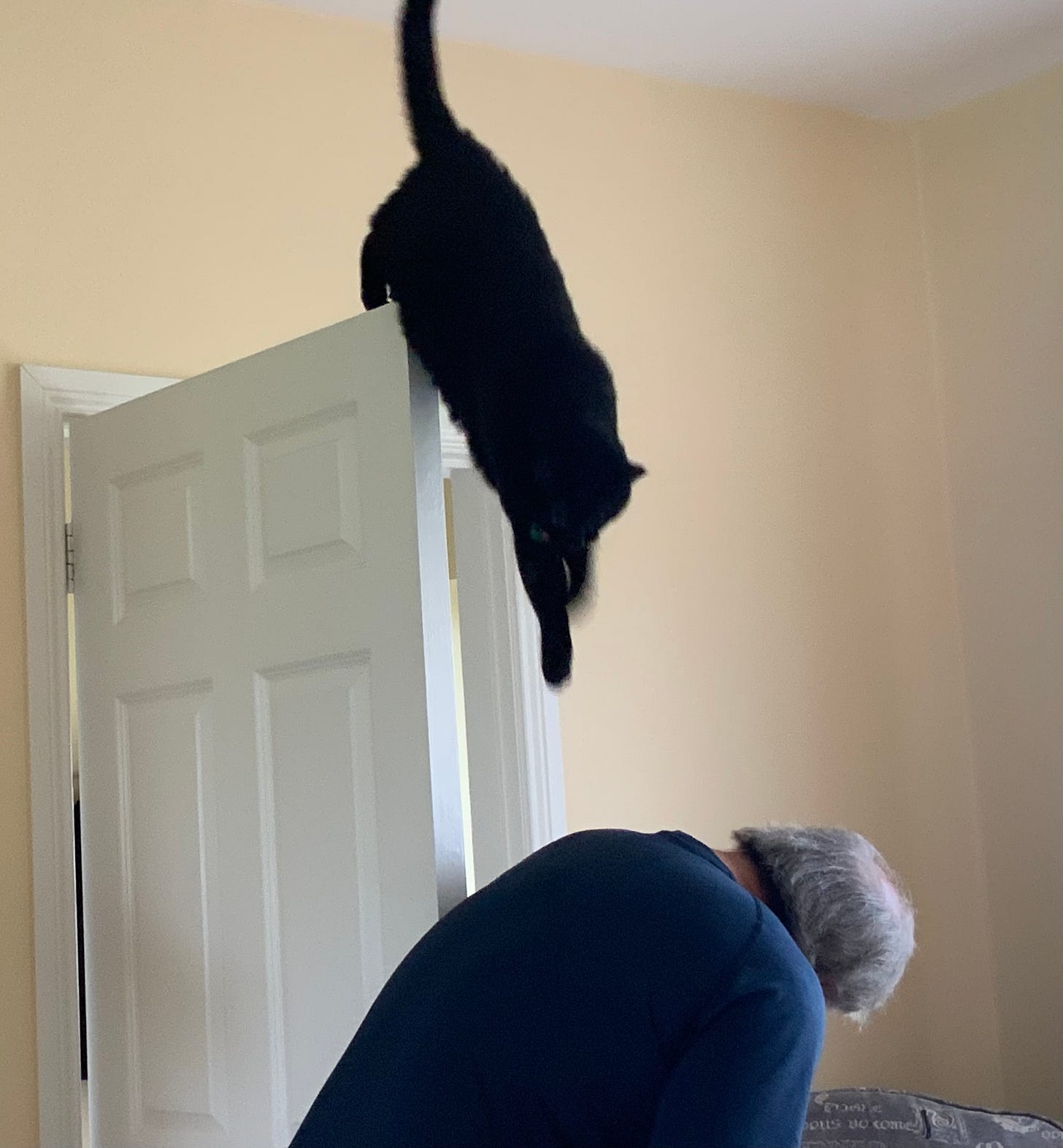

OMG. Those chips! YUM!